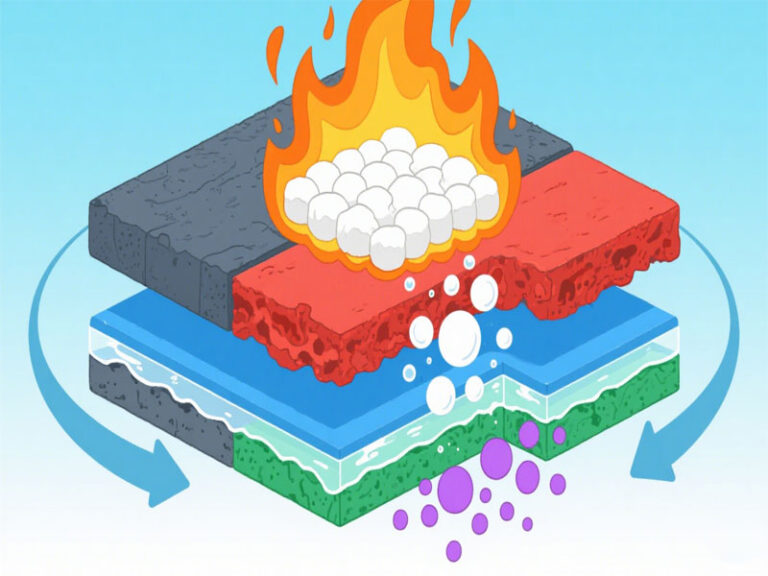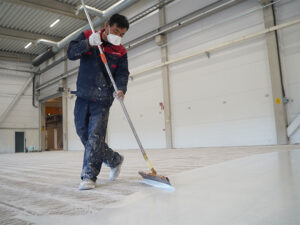Fire resistant paint is a specialized coating designed to reduce fire hazards and slow the spread of flames. Its working principle relies on both physical and chemical mechanisms. Below is a detailed explanation of how fire resistant paint functions:
Intumescent Fire Resistant Paint:
Intumescent fire resistant paint expands rapidly under high temperatures, forming an insulating foam or char layer. This expansion typically occurs at around 300°F (148.8°C), while combustion usually happens above 850°F (450°C). Once expanded, the paint can increase in volume by 200 to 300 times, creating a heat-resistant barrier with low thermal conductivity. This insulation slows heat transfer to the underlying material, protecting the structure from high-temperature damage.
Non-Intumescent Fire Resistant Paint
Non-intumescent fire resistant paint is inherently flame-retardant or non-combustible. When exposed to high temperatures, it releases non-flammable gases (such as water vapor and carbon dioxide), which dilute the concentration of flammable gases and oxygen, effectively interrupting the combustion process. Additionally, this type of paint forms a non-flammable ceramic-like layer that blocks oxygen and provides thermal insulation.
Role of Chemical Fire Inhibitors
Some fire resistant paints contain special chemical compounds, such as phosphorus or nitrogen-based additives. When heated, these compounds release flame-suppressing substances. For example, nitrogen-based fire resistant paint decomposes into reactive groups like NO and NH₃, which interact with free radicals in the fire, disrupting the chain reaction of combustion. This reduces flame temperature and slows down the burning rate.
Heat Absorption and Insulation Properties
Fire resistant paint contains special components (such as silicates) that undergo dehydration and vaporization when exposed to heat, absorbing significant thermal energy. This process slows down the temperature rise of the underlying material. Additionally, the char or foam layer formed by the paint effectively blocks oxygen and heat transfer, further delaying fire spread.
Barrier Formation
During a fire, fire resistant paint creates a protective barrier that prevents direct contact between flames/high temperatures and the building structure or interior materials. This barrier not only safeguards the substrate but also provides critical extra time for safe evacuation.
Reduced Thermal Radiation
Fire resistant paint minimizes heat radiation from flames, decreasing the fire’s impact on surrounding areas. Lower flame temperatures result in less radiant heat emission, helping reduce damage to both people and property.
Versatile Material Applications
Fire resistant paint is suitable for a wide range of materials including wood, steel, concrete, plastics, and metals. By forming a protective layer on these surfaces, it significantly enhances their fire resistance rating and overall fireproofing performance.
Application Methods
Fire resistant paint can be applied through spraying, brushing, rolling, or troweling techniques. Proper application requires attention to coating thickness and uniformity to ensure optimal fire protection. Additionally, color matching and compatible primer/topcoat systems should be considered to maintain complete fireproofing integrity.
Through multiple synergistic mechanisms, fire resistant paint effectively slows fire spread during emergencies, safeguarding both structural integrity and human lives. Its protective functions combine physical expansion, chemical flame suppression, and thermal insulation – making it an essential component in modern fireproof construction.







